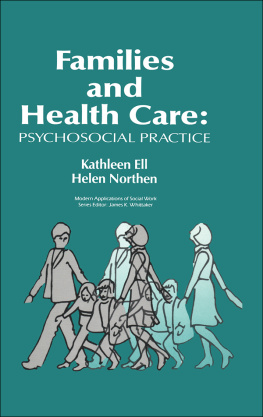Viola Nzira and Paul Williams 2009
First published 2009
Apart from any fair dealing for the purposes of research or private study, or criticism or review, as permitted under the Copyright, Designs and Patents Act, 1988, this publication may be reproduced, stored or transmitted in any form, or by any means, only with the prior permission in writing of the publishers, or in the case of reprographic reproduction, in accordance with the terms of licences issued by the Copyright Licensing Agency. Enquiries concerning reproduction outside those terms should be sent to the publishers.
SAGE Publications Ltd
1 Olivers Yard
55 City Road
London EC1Y 1SP
SAGE Publications Inc.
2455 Teller Road
Thousand Oaks, California 91320
SAGE Publications India Pvt Ltd
B 1/I 1 Mohan Cooperative Industrial Area
Mathura Road
New Delhi 110 044
SAGE Publications Asia-Pacific Pte Ltd
33 Pekin Street #02-01
Far East Square
Singapore 048763
Library of Congress Control Number: 20089203910
British Library Cataloguing in Publication data
A catalogue record for this book is available from the British Library
ISBN 978-1-4129-2267-8
ISBN 978-1-4129-2268-5 (pbk)
Typeset by Cepha Imaging Pvt. Ltd, Bangalore, India
Printed in Great Britain by The Cromwell Press Ltd,
Trowbridge, Wiltshire
Printed on paper from sustainable resources
Preface
This book is intended for students training for qualifications for professions in health or social care, for example nurses, social workers, therapists or medical personnel. It is also likely to be useful for existing practitioners in these fields. It seeks to provide a foundation for knowledge and practice that is anti-oppressive. We hope that after reading this book, and perhaps engaging in further study relevant to their particular role and circumstances, readers will be able to develop a strategy that constitutes a holistic and comprehensive approach to preventing and tackling discrimination and oppression, in their personal relationships, within the organisations in which they learn or practise, and in the communities in which they live or work or have other activities.
While covering academic issues that need to be understood if antioppression is to be effective, this book is essentially practical in that we hope the reader will gain information and ideas to develop a strategy that will maximise their ability to prevent and tackle discrimination and oppression in all circumstances in which they may be encountered. This is particularly important in the health and social care field, where people come to us with difficulties that can only be made worse if negative discrimination or oppression is also experienced.
Structure of the book
The book is divided into four parts:
- useful concepts for anti-oppression
- implications for organisations, with emphasis on health and social care services
- development of anti-oppression by individuals, with emphasis on students in health and social care
- developing continuous learning through reflection
Part I Concepts
, taking into account some significant historical world events that have shaped current thinking on issues of discrimination and oppression. The prevalence of oppression is highlighted, with examples from African, African-American and Jewish experiences. How such groups responded to acts of oppression, through direct challenges against the oppressors and a determination to be survivors and not victims, is recounted. It is suggested that we can learn from how oppressed people themselves have successfully challenged discrimination and overcome oppression. This chapter also introduces concepts of identity, social devaluation and power and their association with oppression, which are discussed in more detail in later chapters. Frameworks for tackling social devaluation are described as guides for the development of anti-oppressive practice. Exercises are provided within this and subsequent chapters to support individual learning and begin the process of reflective practice, a theme that runs through this book.
The exposition of the nature of discrimination and oppression is followed in by a consideration of some concepts in common use in this field, in order to aid understanding, development and maintenance of anti-oppressive practice. The concepts are covered under the headings:
- community and culture
- power and empowerment
- equality and anti-oppression
- identity and relationships
Under each heading key concepts are used to provide a focus, and explanations are given as to how an understanding of meaning can support antioppressive practice. Some of the concepts from this chapter are developed further in subsequent chapters.
Part II Organisations
Anti-oppression can be developed and pursued at the political, social and cultural level, at the level of organisations, and at a personal individual level. covers the political and ideological background and its implications for a commitment to anti-oppressive practice within organisations, particularly health and social care provision.
practice is discussed. Drawing on the findings of the MacPherson Inquiry (1999) and the subsequent interpretation of institutional racism, a race equality paradigm is used to illustrate some of the difficulties that can be encountered when attempts are made to implement anti-oppressive practices within health and social care organisations, due to the different interpretations attached to race, racial identity, racial group and ethnicity. Reference to legislation is made with regard to how court rulings have influenced the creation of a working definition of a racial group. Examples are included to show how individual and institutional racism can operate. Interpretations of stereotypes and ethnicity are included to show the connections with racism. The importance of being knowledgeable about these areas is highlighted, so that practitioners can assess the impact of actions at individual or organisational levels and decide on remedial action so as to promote anti-oppressive practice. Exercises are given to encourage creativity in approaching equality issues.
discusses in more detail ideas about equal opportunities. The arguments for equality are contrasted against natural tendencies towards inequality. An analysis of the distinction between liberal and radical conceptions of equal opportunities provides the reader with a basis from which to contextualise their own organisation. Some of the moral and legal reasons for equal opportunities are stated and summaries of current UK anti-discrimination laws are included within this chapter because they provide the framework for equal opportunities policy development. It is acknowledged that there has been some progress in adopting and implementing equal opportunities policies in health and social care, but the pace of change has remained slow. Health and social care practitioners can use the law to challenge discrimination as part of a package of measures to promote anti-oppressive practice. Commitment to implement their organisations equal opportunities policy as part of their duty of care is emphasised within this chapter.





![Viola Spolin - Improvisation for the Theater: A Handbook of Teaching and Directing Techniques [1963 ed.]](/uploads/posts/book/406435/thumbs/viola-spolin-improvisation-for-the-theater-a.jpg)

